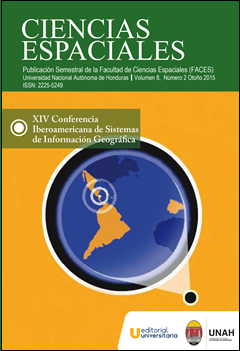Application of geographic information technologies in socio spatial analysis
DOI:
https://doi.org/10.5377/ce.v8i2.2078Keywords:
Socio spatial analysis, GIS application, Urban morphology in slope terrains, RisksAbstract
Geographical information technologies and global positioning systems have been fundamental tools in the research data analysis and fieldwork for the thesis “Settlements in Slopes in Tegucigalpa: Morphology and Urban Risk”, which intends to generate pertinent knowledge towards interventions regarding the urban risk linked to type of placement, topographical conditions of the site, and water management in irregular settlements located in slopes.
A case study was done from two methodological approximations: on one side, the proper social investigation, which allowed to study the socio-economical analysis categories, vulnerability factors and community resources, through participative techniques. On the other side, spatial analysis, where the variables refer to the urban form and structure of the settlement and its relation with the sites topography, the water and sanitation systems, the constructive systems and the hazards which the community is exposed to.
Different geographical information tools were used to conduct the spatial analysis. These tools eased the analysis of the terrain inclinations, the localization of natural and constructed elements, the mapping of the evolution of the settlement over time, the creation of structural and urban form of the settlement and the development of threat maps.
The Digital Elevation Model, which was the basis of this part of the study, was created from a topographical survey of the site, using GNSS (Global Navigation Satellite System) RTK (Real Time Kinematic), with technical support from IHCIT-UNAH and involvement of the inhabitants of the community.
Revista Ciencias Espaciales, Volumen 8, Número 2 Otoño, 2015; 211-224
Downloads
1150




